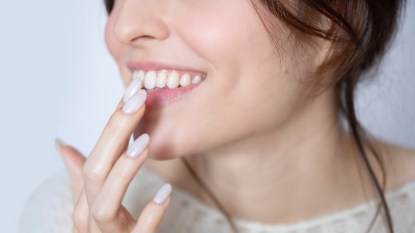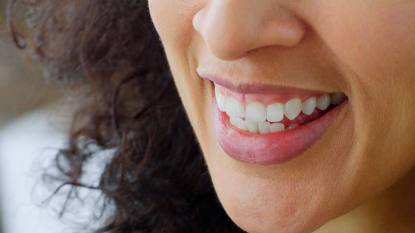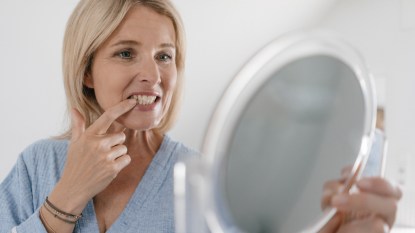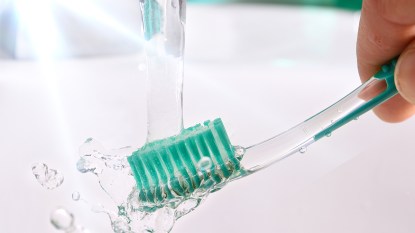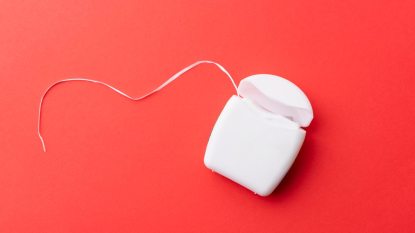Dentists Finally Settle the Debate on Using Mouthwash Before or After Brushing
Plus, they say you won't believe what a difference a simple floss swap can make!
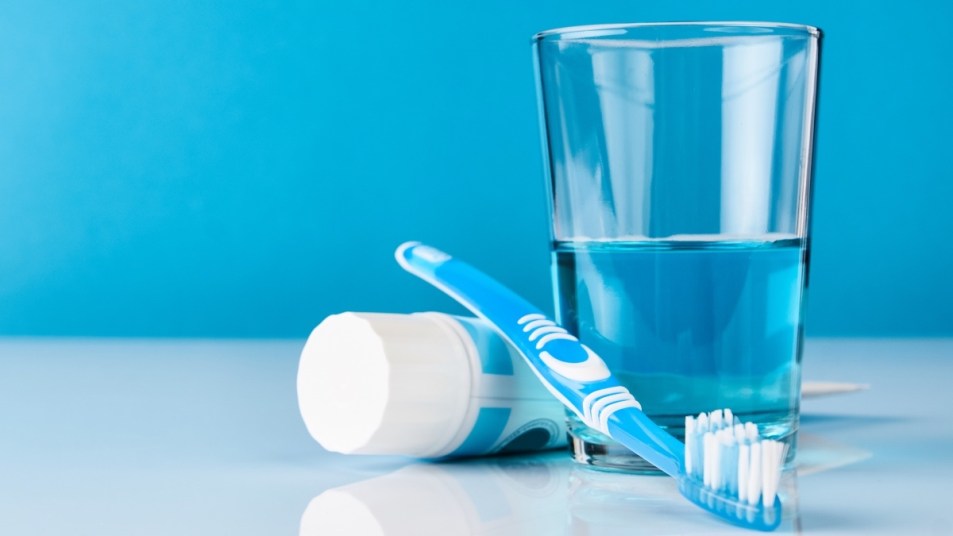
We all know the drill: To keep your teeth healthy, you should floss in between each and every tooth, then brush your pearly whites with toothpaste for two minutes. Repeating this ritual once in the morning and once before bed is the best way to loosen plaque and scrub it away. But for folks who also incorporate mouthwash into their oral care routine, this may leave you wondering if mouthwash best before or after brushing. Here, dentists share the prime time to add the rinse to your routine, plus reveal more easy ways to keep your mouth healthy.
The benefits of mouthwash
A quick swish of mouthwash, also known as mouthrinse, gives your oral care routine a boost. There are two main types of mouthwash: Cosmetic, which is simply a short-term fix for bad breath, and therapeutic. Therapeutic rinses are made with active ingredients such as antiseptic cetylpyridinium chloride, chlorhexidine and/or peroxide that help kill troublemaking bacteria lurking along the gumline for a healthier smile.
While mouthwash can’t replace brushing and flossing, the rinse has the power to work its way into hard-to-reach areas between teeth where bacteria linger, killing them on contact. What’s more, it tamps down the production of plaque biofilm, a sticky bacterial film that coats teeth and can harden into dental plaque. (Click through to see how eucalyptus oil can improve your oral health, too.)
Should you use mouthwash before or after brushing?
You might have heard that using mouthwash after brushing rinses away the enamel-protecting fluoride toothpaste leaves behind after brushing, so you should swish first. But it turns out a better bet is simply waiting 30 minutes after brushing before using mouthwash to allow the fluoride to work its magic. Why? Mouthwash should serve as the “finale” in your oral care routine, advises Marc Lowenberg, DDS, a cosmetic dentist in New York City.
“In general, it’s always best to use mouthwash after brushing and flossing rather than before, as it will help kill the bacteria left behind and rinse it away,” he says. The routine proven to keep your mouth and gums healthiest is floss, brush, then swish, he notes. “Brushing and flossing loosens plaque, and mouthwash helps rinse it away. You’d just be adding an extra step to your oral care routine if you used mouthwash before brushing or flossing.”
For best benefits, floss first, then brush your teeth for two minutes. After about 30 minutes (you can use this time to get dressed for the day or start winding down at night), Dr. Lowenberg advises swishing with mouthwash for 30 second to 1 minute, then spitting it out.
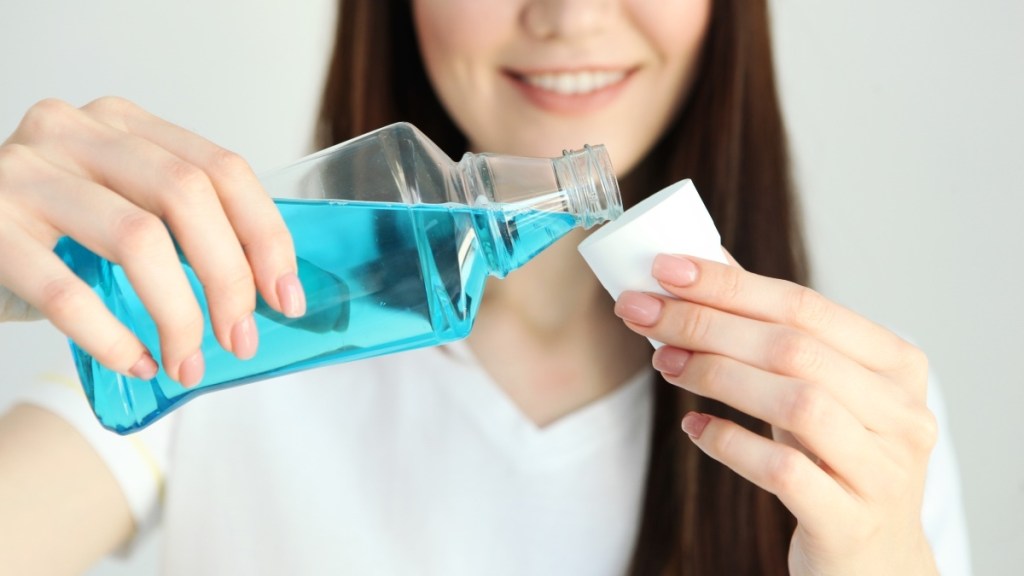
Why you should skip alcohol-based mouthwash
Whenever possible, opt for an alcohol-free mouthwash. Or if you’re using an alcohol-based swish, rinse your mouth with water afterward. “This is really important, as alcohol can dry out the mouth,” Dr. Lowenberg explains. “This can cause bad breath and bacteria to form.” When your mouth is dry and saliva flow is reduced, it’s harder to wash away food particles and neutralize acids in the mouth that aid bacteria growth. An alcohol-free mouthwash is a better option, Dr. Lowenberg says. (Click through for dry mouth remedies.)
“Every mouthwash brand has an alcohol-free version,” adds Irina Kessler, DDS, a cosmetic dentist in New York City. “My favorite is TheraBreath. It’s a little bit pricier than average Listerine, but it’s a nice rinse. TheraBreath contains a patent ingredient that neutralizes compounds that cause bad breath, rather than masking it. Also, the pH is 8.2 which neutralizes acids. A lot of other mouthwashes have lower pH between 5-6.” One to try: TheraBreath Fresh Breath Oral Rinse (Buy from Amazon.com, $14.57 for two).
Tip: There’s no need to splurge on pricy whitening mouthwash. “It doesn’t really whiten teeth,” Dr. Lowenberg reveals. “Mouthwash is designed to help fight bacteria that brushing and flossing missed, and to help freshen breath. It cannot stay in contact with the teeth long enough to yield any real whitening benefits.” (If you are interested in whitening your smile, click through to see the best teeth whitening for sensitive teeth.)

How to boost the benefit of your mouthwash
Now that you know to use mouthwash after instead of before brushing, you can maximize your results with a smart trick from Bruce N. Lein, DDS, a dentist in Jupiter, Florida.
“The best method of cleaning your teeth overall remains flossing, brushing and, even better, adding fluoridated mouthwash to your Waterpik,” Dr. Lein reveals. “Initial flossing will start the dislodgement of food, plaque and calculus formation. Brushing will further remove debris, but the real secret is the Waterpik.”
A Waterpik is a type of electric flosser that combines water pressure and pulsation to flush out bacteria and plaque between teeth and below the gumline. While not a replacement for traditional floss, research in the Compendium of Continuing Education In Dentistry found the dental water jet device removes up to 99.99% of plaque biofilm. “Sometimes referred to as water flosser, the Waterpik will ‘power wash’ the remaining debris,” Dr. Lein explains.
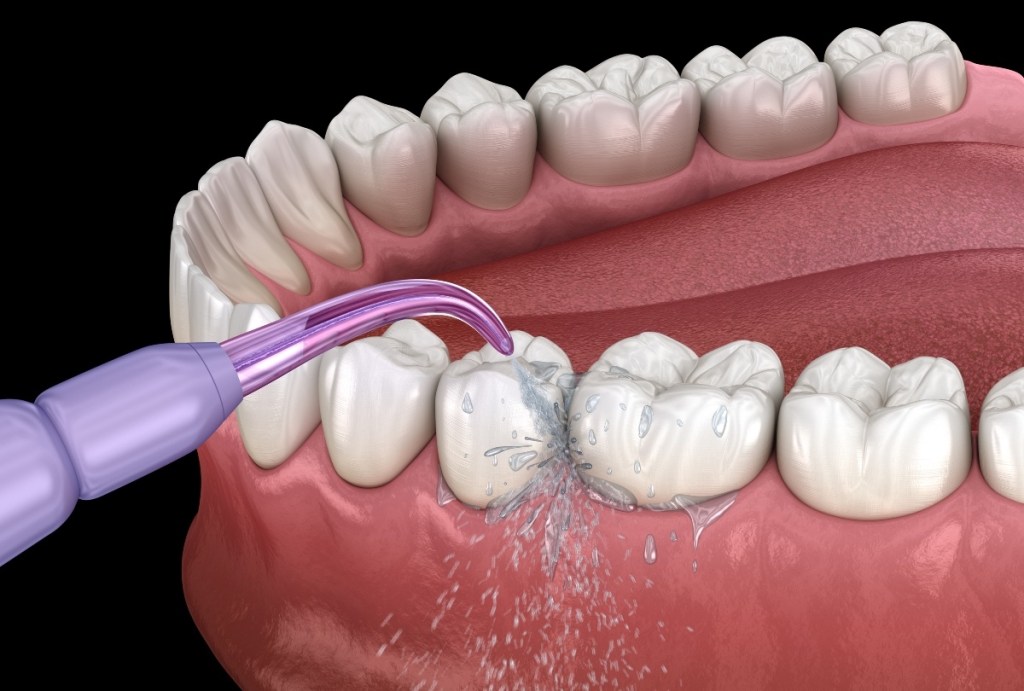
To get the benefit, add a small amount of mouthwash to a Waterpik reservoir filled with warm water. Aim for about a ratio of about 1 part mouthwash to 2 parts water (avoid exceeding a 1:1 ratio of mouthwash to water). A compact model to try: Waterpik Nano Plus Water Flosser (Buy from Amazon, $59.99).
More easy ways to safeguard your smile
Swishing mouthwash after, rather than before, brushing is a smart move. Here are a few other easy steps you can take to keep your mouth healthy.
1. Pre-brush
Instead of heading straight in with toothpaste, spend 30 seconds “pre-brushing” teeth with a dry toothbrush. Unlubricated bristles are better able to target and whisk away sticky bacterial biofilm lurking along the gum line. This reduces plaque build-up by as much as 58%, suggests research in the International Journal of Dental Hygiene. Follow with a standard tooth-brushing session to then drive your toothpaste’s fluoride deep into teeth.
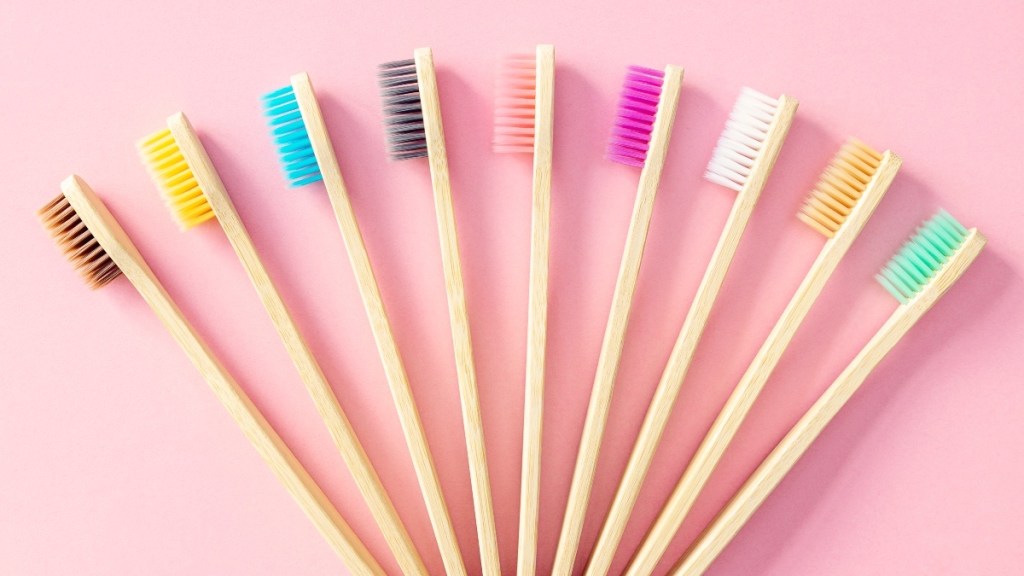
2. Trade floss for dental tape
You know that flossing is an essential first step in your oral care routine. But it turns out the type of floss you use (yes, there are different kinds!) can level up your results. The key: Opting for dental tape instead of dental floss, Dr. Lein says. While floss is more prone to breaking or fraying, “dental tape is thicker and wider,” he explains. “It will remove more plaque than the usual thinner floss. Try it yourself and you will be amazed. It makes a big difference and the proof is in your sink when you rinse!” One to try: Reach Dentotape Unflavored Waxed Tape (Buy from Walmart, $8.21). (Tip: Have leftover dental floss after making the switch to tape? Click through to see 10 brilliant uses for dental floss.)
3. Consider a probiotic lozenge
Taking a special mouth-friendly probiotic lozenge for 30 days cuts plaque 44%, finds a study in the International Journal of Pharma and Bio Sciences. Plus, it reduces gingivitis 42% and curbs gum bleeding (one of the main early signs of gum disease) by 52%. And those results remained even a month after folks stopped taking the pills. Researchers credit a special “good guy” bacterial strain called S. salivarius or M18 with killing off S. mutans, a bad-actor microbe responsible for bad breath and gum disease. A study-proven supplement containing M18: Florassist Oral Hygiene (Buy from LifeExtension, $13.50). (Tip: Probiotics are also an amazing way to improve your gut health. Click through to learn how to make your own probiotic-rich yogurt at home.)
For more ways to safeguard your smile:
These Easy, Surprising Self-Care Tips Can Reverse Gum Disease, Say Dentists
Dentists Explain What You Need To Know About Dry Mouth + How To Find Relief
10 Best Electric Toothbrushes for Receding Gums
This content is not a substitute for professional medical advice or diagnosis. Always consult your physician before pursuing any treatment plan.


